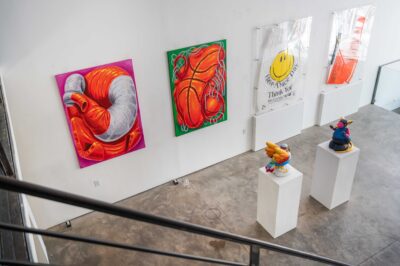'Intimacy-Autonomy' by Joan Semmel [Brooklyn Museum, Anonymous gift]
Gadsby v. Picasso: ‘It’s Pablo-matic’ opens at Brooklyn Museum this week
Picasso’s ghost meets comedic feminist fireworks at the new Hannah Gadsby-curated exhibit, opening June 2
Pablo Picasso once famously said, “You can have all the perspectives at once!” To which Australian comedian Hannah Gadsby replies: “What a hero. But tell me, are any of those perspectives a woman? Well, then I’m not interested.”
In a surprising move that is already sending ripples through the art world, Gadsby — whose razor-sharp wit and unapologetic feminist stance have made them a keen cultural observer — is calling the bluff of the art world’s greatest nude emperor. With “It’s Pablo-matic,” the forthcoming Picasso exhibit they’ve curated for the Brooklyn Museum the gloves are off.
As an artist whose ego was bigger than the Louvre, Picasso may have revolutionized modern art, but he also had a knack for treating women like second-class citizens.
“Women are machines for suffering,” Picasso told his mistress Francoise Gilot in 1943. And to another of his mistresses he remarked: “there are two types of women in the world — goddesses and doormats.”
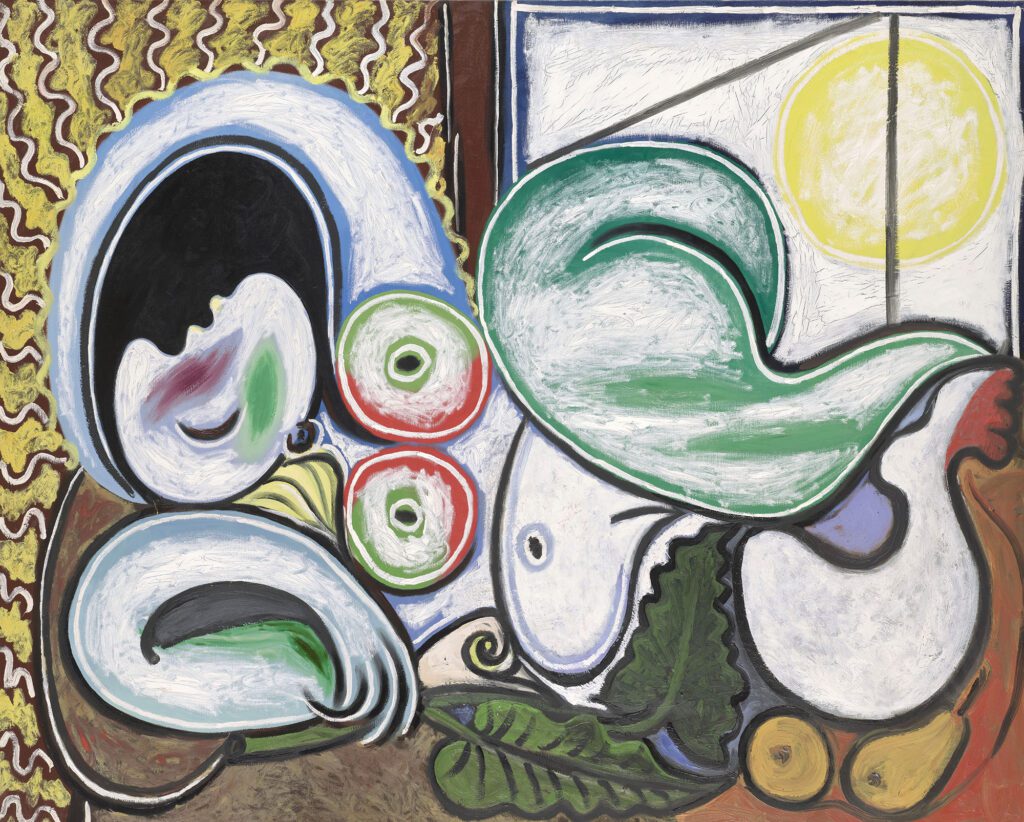
‘Reclining Nude’ by Pablo Picasso (Musée national Picasso-Paris Dation Pablo Picasso, 1979)
He bled his long-term lovers dry and crushed them into his canvases. These women paid the price for having been his muse: two were driven to mental breakdowns and two committed suicide.
For years the Spaniard’s attitude towards the fairer sex has been the subject of intense scrutiny, begging the question of how to separate the artist from the art. It’s time to knock the icon off his pedestal. Enter Gadsby, armed with a fresh perspective: reassessing the legacy of the great master through a modern, feminist lens. But don’t think for a second that Gadsby is simply taking potshots at an easy target. They are using Picasso as a catalyst to spark a larger conversation about gender politics in art. As Gadsby has said, they want their comedy to be a conversation starter, not a conversation ender.


Picasso and Gadsby (Courtesy Brooklyn Museum)
‘Ruled by monsters from the 1900s’
Opening June 2 and running through September 24, the Brooklyn Museum’s “It’s Pablo-matic: Picasso According to Hannah Gadsby” will examine the artist’s complicated legacy even as it acknowledges his work’s transformative power and lasting influence.
Organized by the Brooklyn Museum, in collaboration with the Musée National Picasso-Paris, the show is part of a global presentation of exhibitions and events marking the 50th anniversary of Picasso’s death.
It’s Pablo-matic is curated by Catherine Morris and Lisa Small, with the help of Gadsby, whose genre-smashing, 2018 comedy special, “Nanette,” called out the inexcusable behavior of some of art history’s most towering figures, Picasso in particular.
While many art historians have argued that Picasso’s misogyny is exaggerated, chalking it up to the norms of his era and the macho Andalusian culture from which he hailed, Gadsby and the Brooklyn Museum point out that these excuses are limp.
“Art history has changed radically in the 50 years since Picasso’s death,” says Morris, “and that includes changing the way that artists, art historians and critics view and talk about him.”
Aiming to target younger audiences by confronting misogyny, the Brooklyn Museum’s idea for this 50th anniversary “is to think about how he is looked at today,” says Small. “Fifty years aligns with the rise of feminism and feminist art critique, culminating more recently in the #MeToo movement that galvanized cultural spheres.”
Showcasing over one hundred artworks, including paintings, sculpture, photography and video, “It’s Pablo-matic” promises a contemporary, and innovative, way of looking at the artist’s complicated legacy.
“We are still being ruled by monsters from the 1900s,” says Gadsby in the museum’s statement. “So why not celebrate Picasso as the perfect mascot for such a monstrously arrogant and destructive century?”
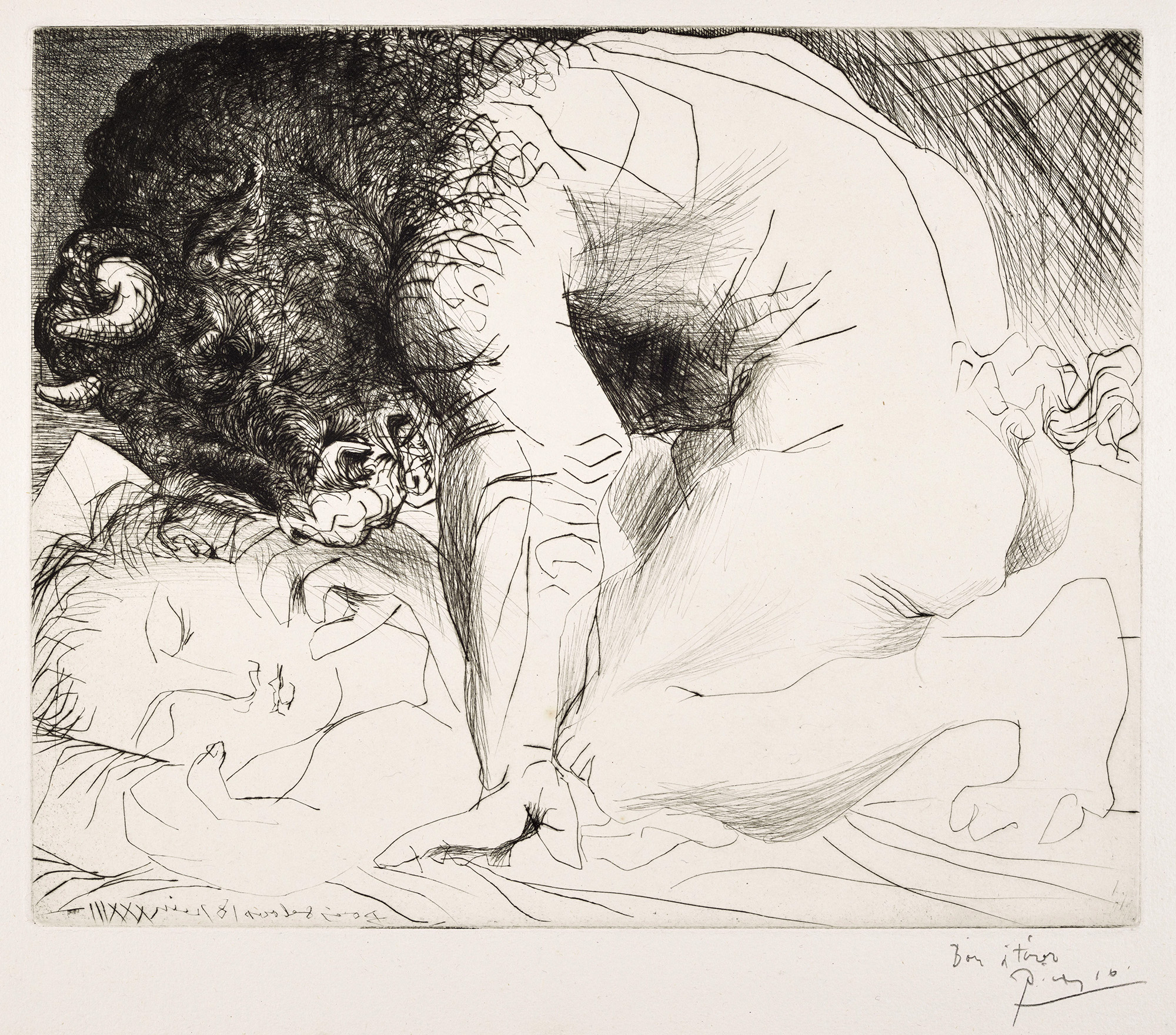

‘Minotaur Caressing a Sleeping Girl’ by Pablo Picasso (The Museum of Modern Art, New York. Abby Aldrich Rockefeller Fund, 1949)
One innovation is in the way the exhibition juxtaposes drawings and paintings by Picasso alongside works by 20th and 2st century artists from the Brooklyn Museum’s Elizabeth A. Sackler Center for Feminist Art, which despite its namesake does not owe its existence to opiate money, according to the museum.
“I’ve been exploring this,” Gatsby explains, ” The art world’s relationship to money is fundamentally problematic. That includes Picasso: is he a hero, or is he just worth a lot of money?”
Included as the feminist counterbalance to Picasso are artists Kiki Smith, May Stevens, Cecily Brown, Marilyn Minter, Kathe Kollwitz, Marisol, Guerilla Girls, Mickalene Thomas, Ana Mendieta, to name but a few.
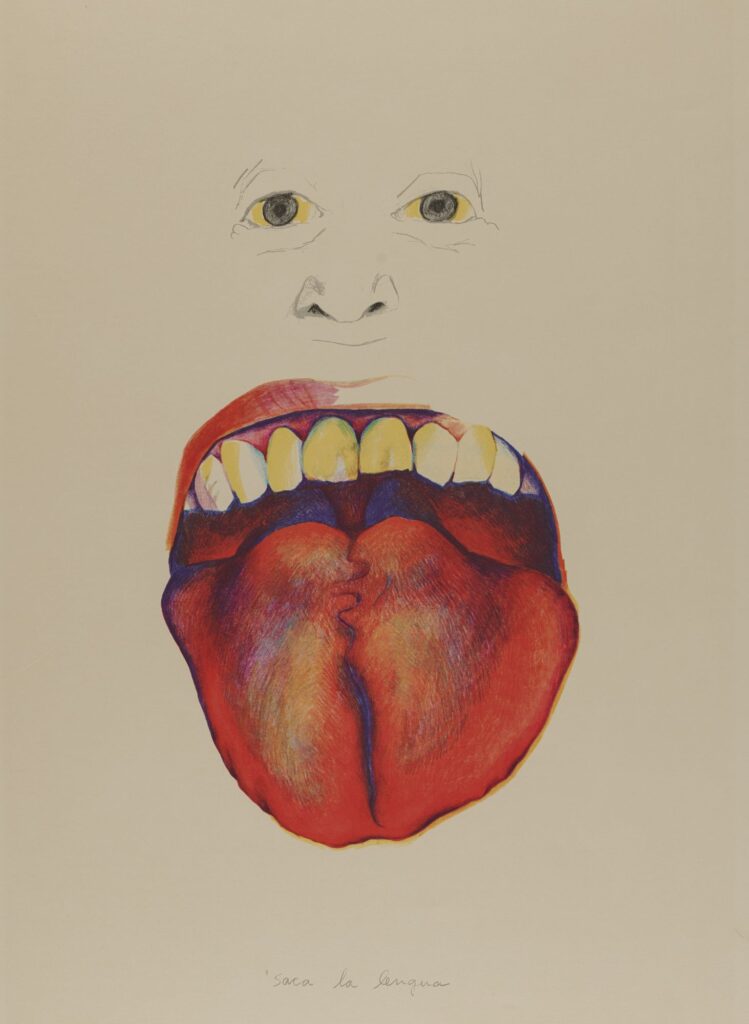

‘Saca la Lengua’ by Marisol (Brooklyn Museum, Bequest of Richard J. Kempe)
“What you’ll see when you see the show is not a lot of women’s artwork that directly points at Picasso,” says Morris. “It much more points to rewriting modernism and looking at women artists who had been influenced and love modernism, but also desperately want to change modernism because they see the fault lines of misogyny, and they see the obvious places where they were not included, where they were denigrated, or where they were simply seen as subjects and not as voices in their own right.”
‘No one’s sexual fantasies are politically correct’
In both wall text as well as in supplemental materials for the museum’s audio tour, there are many responses to Picasso’s legacy, positive and negative. The cumulative effect is less of an either/or stance but more both/and.


‘Las Animas’ by Kiki Smith (Brooklyn Museum, Emily Winthrop Miles Fund)
“I love a great deal of Picasso’s work, and I’m always learning from it,” says Kiki Smith. “As a printmaker I know very few who can get anywhere near the depth of his understanding and his playfullness … I was once asked by an auction house to give a talk about Picasso’s prints. They wanted me to speak critically of him as a person, but upon seeing the prints, all I was was deeply humbled. His work has often been a guide for me”
And Marilyn Minter’s wall text reads: “No one’s sexual fantasies are politically correct.”
Accompanied by a video recording featuring Gadsby’s incisive humor and sharp critique, plus wall text with Gadsby quips like “Art history taught me that, historically, women didn’t have time to think thoughts — they were too busy napping naked alone in a forest,” “It’s Pablo-matic” According to Hannah Gadsby promises to both insight and a little fun.
“What’s important for the Brooklyn Museum, is that museum institutions like ours have long been put in the position of writing art history, telling the world what’s important and why,” says Morris. “We live in a time where institutions are changing, and one of the ways they are changing is to be responsive to contemporary conversations to make space where the issues that are percolating in the world can be discussed in an open-ended way in an institution.”
So what does Picasso’s legacy look like through a contemporary, feminist lens? Does the Brooklyn Museum and Hannah Gadsby’s show make the art more “relevant” to millennial audiences, or is this simply an attempt to force today’s political concerns onto past art?
One art critic, Dean Kissick, mocked the Brooklyn Museum show by tweeting: “Commemorating the anniversaries of our greatest artist’s deaths by having comedians that don’t tell jokes curate shows about how much of an asshole they were is, I guess, quite funny.”
Maybe. But we’re pretty confident it’ll be Gadsby — and museum goers — having the last laugh here.
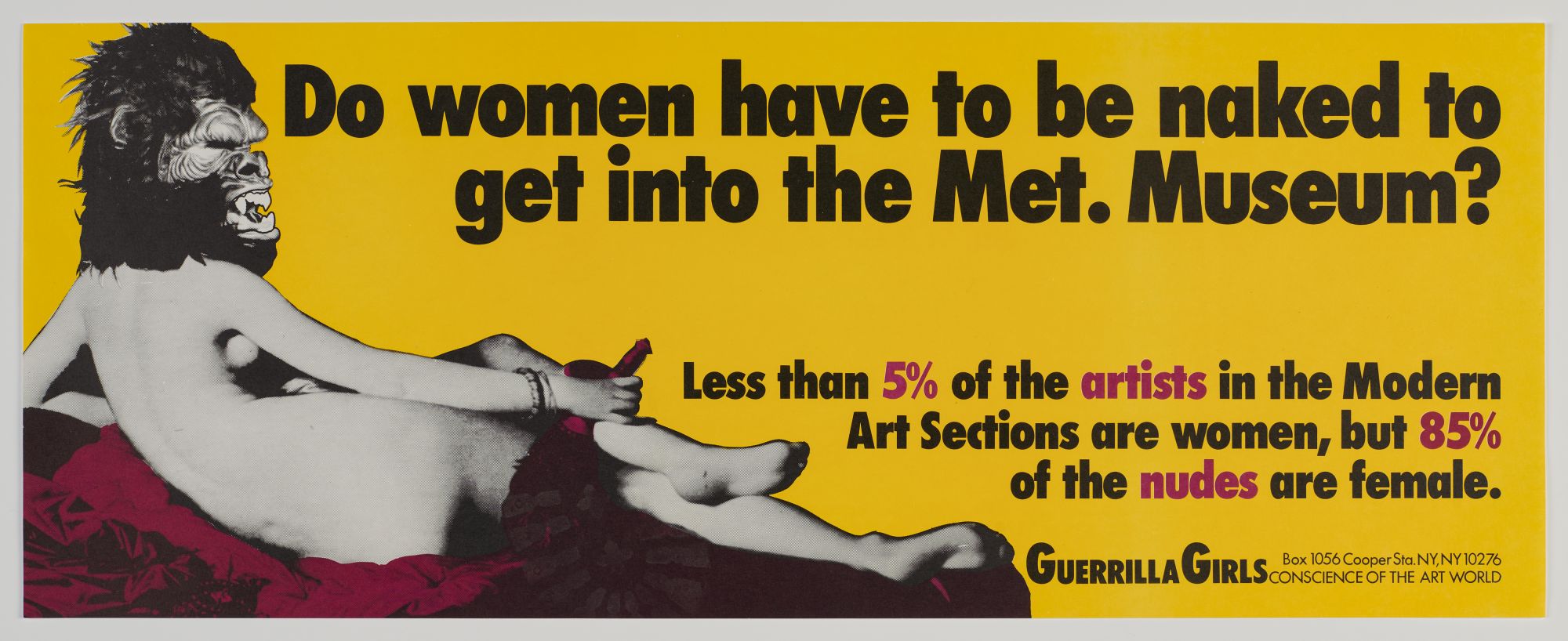

‘Do Women Have to Be Naked to Get Into the Met. Museum?’ by Guerrilla Girls (Brooklyn Museum, Gift of Guerrilla Girls BroadBand, Inc.)
You might also like 



















